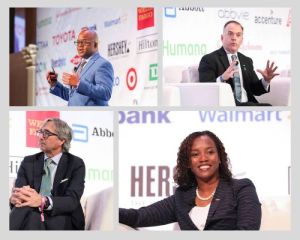The business impact of diversity has never been more clear. If you want to innovate and ensure a productive workforce, you need a wide range of experiences, viewpoints and ways of working within the people that make up your organization.
According to a 2019 study from the World Economic Forum, companies with above-average diversity scores drive 45% average revenue from innovation, while companies with below-average diversity scores drive only 26%. Meanwhile Gartner data from 2019 showed that diversity of age, ethnicity, gender and other dimensions foster high performance among teams.
A socially conscious public, however, does not necessarily care about your bottom line. They simply want to see see themselves reflected in the businesses they support with their hard-earned money.

















